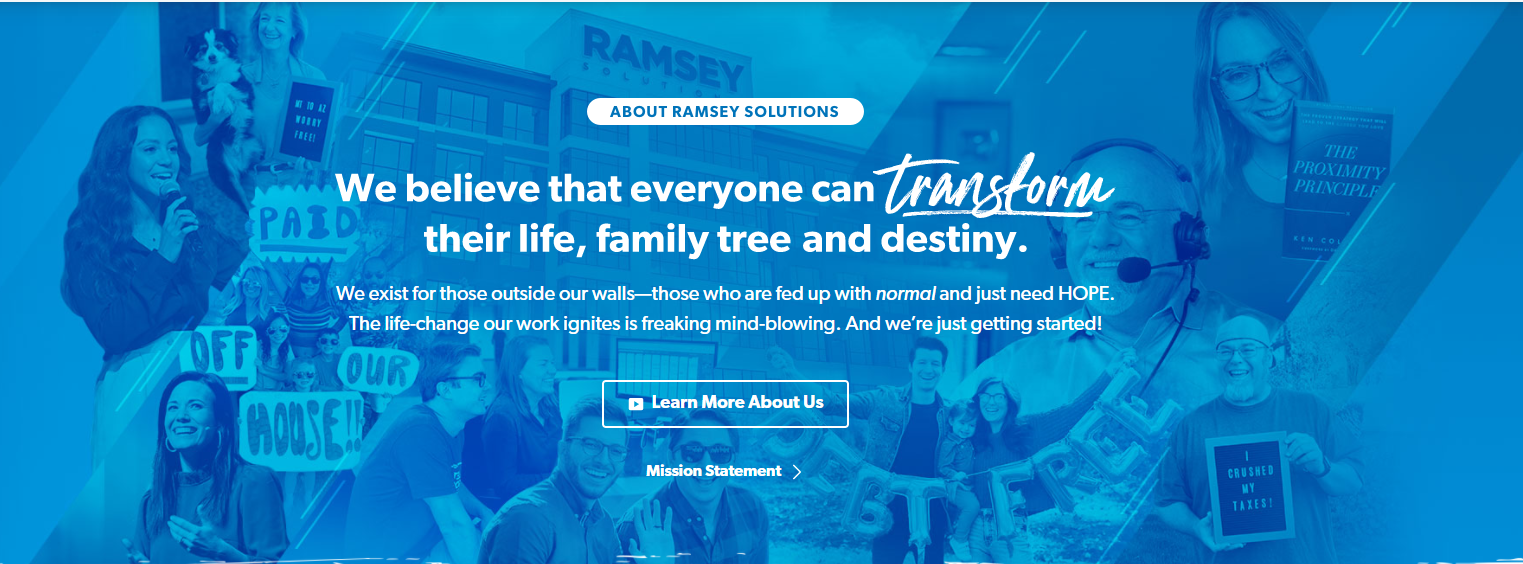Learning How to Follow the Dave Ramsey Plan
Financial wellness and stability can be hard to achieve, especially if you’re drowning in debt and don’t know how to get out of the hole. Luckily, there are several amazing financial advisors out there willing to give advice to help you live a healthy financial life. Dave Ramsey is one of these advisors. Hehas his own talk show specifically to help people in debt become financially stable by using his 7 baby steps to financial peace and wealth. Here, we will give you a run down of the 7 things you need to complete in order to help you become financially healthy, and if you want to learn more, consider purchasing his book, The Total Money Makeover. Here are the 7 baby steps in the Dave Ramsey Plan:
1. Save $1,000 for Your Emergency Fund
The very first thing you need to do with your finances is save $1,000 and keep that money in a separate savings or checking account from the rest of your money. Throughout your financial journey, emergencies, accidents and unexpected bills are bound to pop up out of nowhere. You need to have a separate account to support these unforeseen charges so that you can continue to afford your normal expenses.
2. Pay off all your Debt (Except for your Mortgage)
The next step towards financial peace is to pay off all your loans, excluding your mortgage. Paying off your debts as fast as possible will set you up for a life of financial freedom to live however you want. There are two main ways to pay off your debts: The snowball method and the avalanche method. The snowball method is when you pay off your loans with the smallest amount of interest first and work your way up towards the larger debts. The avalanche method is when you pay off the debts with the largest amount of interest first and then work your way down towards paying off your debts with smaller interest. Ramsey suggests paying off your debts with the snowball method because it helps most people stay encouraged and motivated because they can see their loans start to disappear. If you prefer the avalanche method, that’s fine too. The main goal is to get the debt amount to $0 no matter which method you choose.
3. Build your 3-6 Month Emergency Fund
After you have paid off all your consumer loans except for your mortgage, you need to save up about 3-6 months’ worth of living expenses for you and your family. This is important to have incase something unexpected happens (Hellooo COVID!) and you are out of a job for a while. It ensures that your family will still be able to live comfortably and normally for a few months while you find or create a new source of income or cash flow.

4. Invest 15% of Your Household Income
Now that all your debt is gone and you have saved up about 3-6 months’ worth of living expenses, you need to start investing. This is a great step to help your reach your retirement goals! Some great ways to save for retirement is by investing in your 401(k) up to what your employer matches, fully fund a Roth IRA for you and your spouse and then keep bumping up your contribution until you reach 15% of your household income. So if you bring home $100,000, you need to be investing about $15,000 per year. Another great option is to invest in mutual funds. All these investing tools will help your money grow and create a healthy nest egg for your retirement.
5. Saving for Your Kids College
Investing for your children’s college is an important next step towards reaching financial health. Two ways to wisely save for their college are 529 college saving plans and Education Savings Accounts (ESAs). Before you start savings for your kid’s college years, you need to do the math and see about how much you will be needing to spend once your kids turn 18.
6. Pay off your Home Early
Now that you have plenty of savings and no more consumer debt, it’s the perfect time to start paying off your house quickly! This is the last step to complete before you are completely debt free! Any part of your monthly income that you used to pay off debt with or put into your emergency savings account can now be put on top of your monthly mortgage payment! This will help you pay off the last bit of debt a lot sooner, and then you can be completely free to do as you please with your finances!!
7. Build Wealth and Give
Now that you are financially free, you can invest your extra money, travel, help family and give generously. This fun step will leave you feeling relaxed and excited to help others who are financially struggling. This is also a great time to save up to give your family a great inheritance that will one day help them tremendously.
Now that we’ve gone over all of Dave Ramsey’s 7 baby steps, you can use them to be financially secure and healthy! Have you started you Dave Ramsey financial journey? If so, what step are you on?